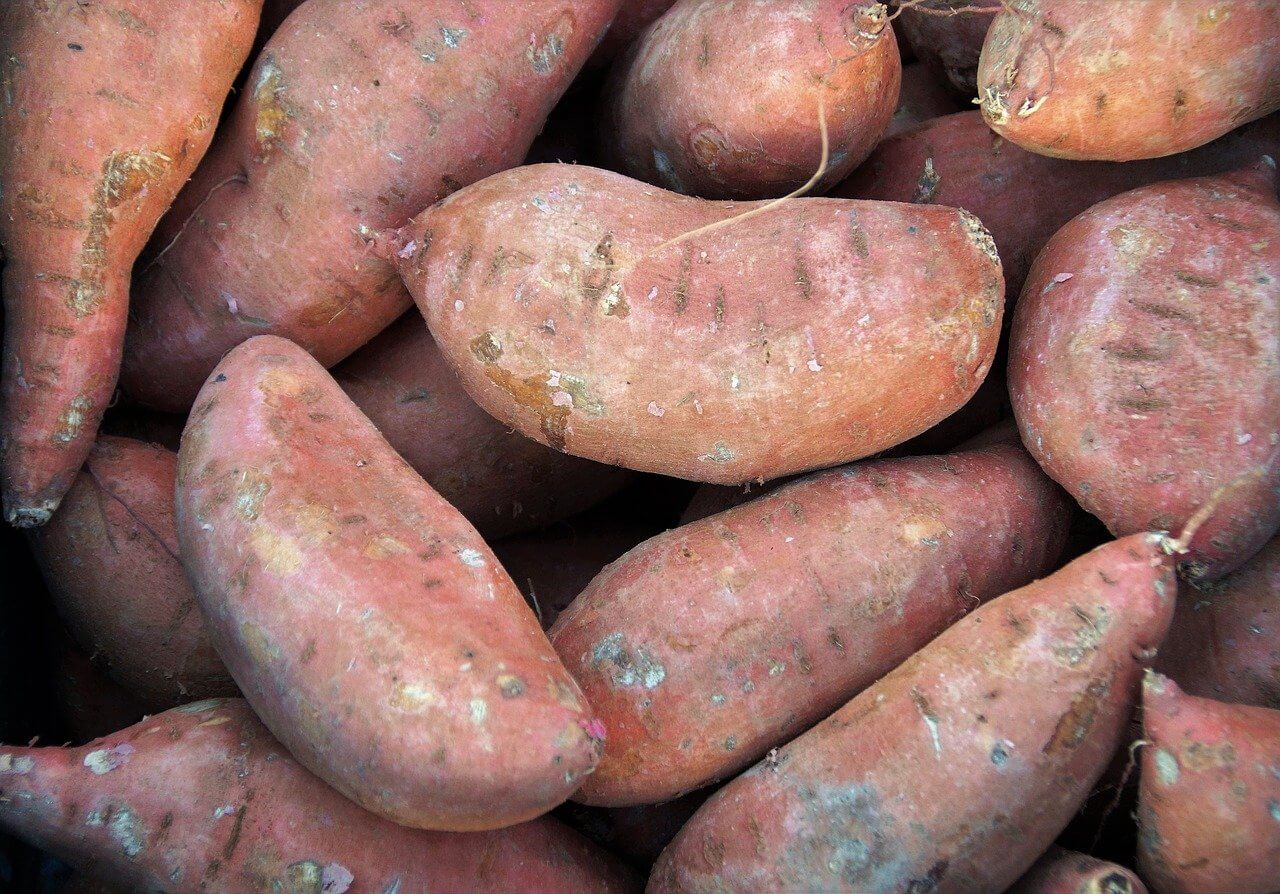Fruit and vegetables go bad when the air gets to them and causes an oxidization reaction. This can mean that they have to be thrown away, in the worst case scenario, and even in the best case where they can still be used they will be much less attractive.
When sweet potatoes go brown, it is because they are starting to rot and mold, and will therefore be no good for eating. Do you need to know how to keep sweet potatoes from turning brown? We have worked out a few things to help your favorite vegetable stay in its top form!
What You'll Learn Today
Why Do Sweet Potatoes Go Brown?

When you cut a vegetable, the enzymes in the cells (Polyphenol Oxidase, in case you were wondering), reacts with the oxygen in the air and the flesh turns dark.
It is believed that these enzymes can help some plants to be more resistant to pests, so it has a function beyond irritating you when you open the fridge to a browning half sweet potato!
The other reason that sweet potatoes go brown is because they are past their best – this type of browning is not really one that you can come back from; sweet potatoes that are going brown because they are past their best will not taste great, and in severe cases might give you an upset stomach.
How To Keep Sweet Potatoes From Turning Brown
Depending on the reason for your sweet potatoes going brown, it should still be possible to save them – or at least to prevent the problem in the future.
To stop sweet potatoes going brown once they’ve been peeled or cut, you could try:
1. Placing them in a bowl of water
This will stop air getting to the cells and causing the reaction.
2. Adding a little salt to the water can help
Just remember to rinse the salt water off before you cook them if you don’t want salty potatoes!
3. Using lime or lemon juice
These two citric acid based liquids will not only prevent browning, but will bring out the bright color of the flesh.
4. Parboiling
Hot water will stop the blackening of the flesh instantly, and it has the added bonus of being a good method to start you off freezing your sweet potatoes.
If your sweet potatoes are going brown because they are going off, you should:
- Throw away any moldy potatoes, and remove any slightly brown patches where the flesh can be saved.
- Look at your storage options, and make sure to keep your potatoes in a cool, dark place.
- Use them up within two weeks, before any brown patches start to appear.
- Freeze them and store them before they have a chance to start going off.
This video shows you how to prevent the browning of yams, but the principle is the same for all sweet potatoes:
What To Do If Your Sweet Potatoes Go Brown
In some case you can still use the parts of the sweet potato that haven’t gone bad, if the blackening hasn’t spread too far. Simply remove the black parts and the rest of the sweet potato should still be fine to use.
If your sweet potatoes are consistently going black, you need to re evaluate your storage options. Make sure they are cool and in a dark place, and you use them within a fortnight, and you should avoid the problem.
If your sweet potatoes go brown after you cut them, simply choose a different storage or cooking option, as above.
Final Words
A sight browning of the flesh after cutting does not mean the sweet potato is bad, but it can ruin the look of your careful cooking.
If you are vigilant with your sweet potatoes, follow the tips above when preparing them, and you store them correctly, you should be able to avoid the problem of how to keep sweet potatoes from turning brown.
Thank you for sharing. Now I know why my sweet tomatoes are so bad after I cut and left them for a few hours.